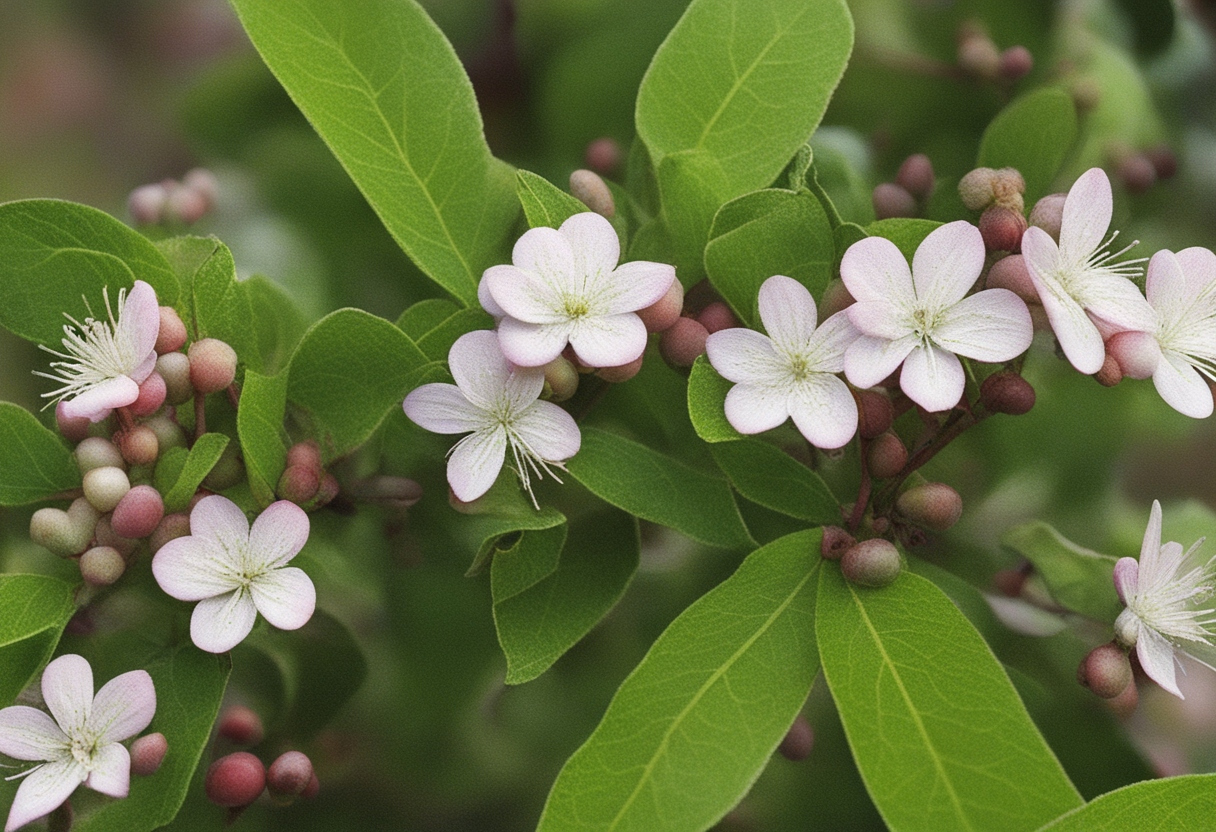Introduction
Ceanothus is a genus of flowering shrubs and trees native to North America. They are generally used as ornamental plants because they are attractive, easy to grow, and widely available. They work well in large gardens and small patios alike, so if you’re looking for an easy way to add some color or texture to your yard, then this guide will show you how to do it!
Common Name
Ceanothus is a genus of plants that includes over 100 species. These plants are native to western North America and are found in California, Oregon, Washington, Idaho and Nevada. Ceanothus is also known as bush honeysuckle or California lilac (the latter being the common name used by most gardeners).
The common name “ceanothus” comes from Greek roots meaning “waxy flower.” It refers to the waxy appearance of some flowers on this genus of shrubs and trees.
Botanical Name
The genus Ceanothus is a member of the Rhamnaceae family, which includes approximately 500 species. Ceanothus americanus is native to the western United States and grows as an evergreen shrub or small tree up to 10 feet tall. It has aromatic leaves that are grayish-green in color with serrated edges, white flowers that bloom from May through July (depending on location), red berries that ripen in late summer/early fall and attract birds when they’re fresh but turn black after being left on branches for a few days.
Ceanothus is pronounced “see-ANN-oh-thus.”
Flower Color
The color of the flowers depends on the variety. Some have yellow, red or white flowers and some have double flowers. Some varieties even produce fragrant blooms!
Flower Type and Size
Ceanothus flowers are tubular, and they come in white, pink or purple. The flowers are usually about an inch long and clustered together on a stem.
The blossoms of Ceanothus are small but beautiful. They’re perfect for adding to arrangements for weddings or other special events!
Hardiness Zones
The hardiness zones for Ceanothus are 4-9, which means you can grow the plant in most of the United States. It is a very sturdy plant that can handle temperatures as low as -10 degrees F (-23 C).
Height and Spread of the Plant
The height and spread of a ceanothus plant varies by species. Some species are small shrubs, while others grow into large trees. The size of your particular plant will depend on how much you water it and how much sunlight it gets. You can prune your ceanothus to keep it smaller if you want to keep it in check, but most people don’t bother with this because they prefer the open look of an unpruned plant that grows naturally into an extensive thicket or hedge.
Ceanothus are generally low maintenance plants; they don’t need much watering or fertilizing during the growing season (which lasts from spring until fall) because they grow best when they get plenty of sun exposure but aren’t over-watered or overwatered during hot weather periods when temperatures exceed 85 degrees Fahrenheit (29 degrees Celsius).
Light Requirements
Ceanothus plants are shade-tolerant, which means they can grow in full sun or partial shade. In fact, they prefer a bit of extra light and can do well in a sunny window with supplemental lighting. However, if you’re looking for the best results from your ceanothus plant(s), then it’s recommended that you grow them outside in full sun.
Ceanothus plants will thrive outdoors year-round without any protection from frost or wind damage because their thick leaves act as natural armor against harsh conditions like these ones! If you live in an area where temperatures drop below freezing during winter months (like we do here at The Sill), then make sure to bring your plants indoors before any severe weather hits so they don’t get damaged by frostbite once again next summertime 🙂
Maintenance Required for Ceanothus Plants
Ceanothus plants are low maintenance and require very little care. They’re drought tolerant and can handle periods of neglect, making them ideal candidates for container gardening. In fact, many species of Ceanothus are native to California where they grow in sandy soil that provides little moisture or nutrients.
Ceanothus plants don’t need much watering at all; in fact, overwatering can be harmful to these plants because they prefer dryer conditions than other types of flowering shrubs (which makes sense given their habitat). In general, you should only water your Ceanothus when the top 1/2 inch of soil feels dry to touch–this will help prevent root rot from occurring as well! You also don’t need fertilizer for most varieties since they’re naturally adapted to poor soils with little nutrients available for growth; however if yours grows indoors where there’s plenty of light exposure but no access outdoors then adding fertilizer could be beneficial since you won’t have any natural sources nearby either way!
Finally…you won’t need pruning either! Most types just bloom once per year so there isn’t really any reason why someone would want trimming down their branches anyway…plus we’ve already talked about how easy it is take care these guys so why bother wasting time trying something new?
Growing ceanothus is easy, but there are some special considerations to make.
Ceanothus can be grown in full sun or partial shade, and it’s an easy-to-grow plant. In fact, ceanothus is one of the most adaptable plants you’ll ever find. It can be grown as a ground cover, in containers and hanging baskets, as well as as an ornamental hedge or specimen plant.
Ceanothus tolerates many different soil types but prefers an acidic soil with good drainage (like most shrubs). They also do best when planted in full sun–they don’t need much water once established so they don’t appreciate being over watered either!
Conclusion
We hope this guide has helped you to understand the basics of growing ceanothus. It’s a beautiful plant that can add color and interest to any garden, but it does require some special care. If you follow these tips, we are confident that your plants will thrive!












